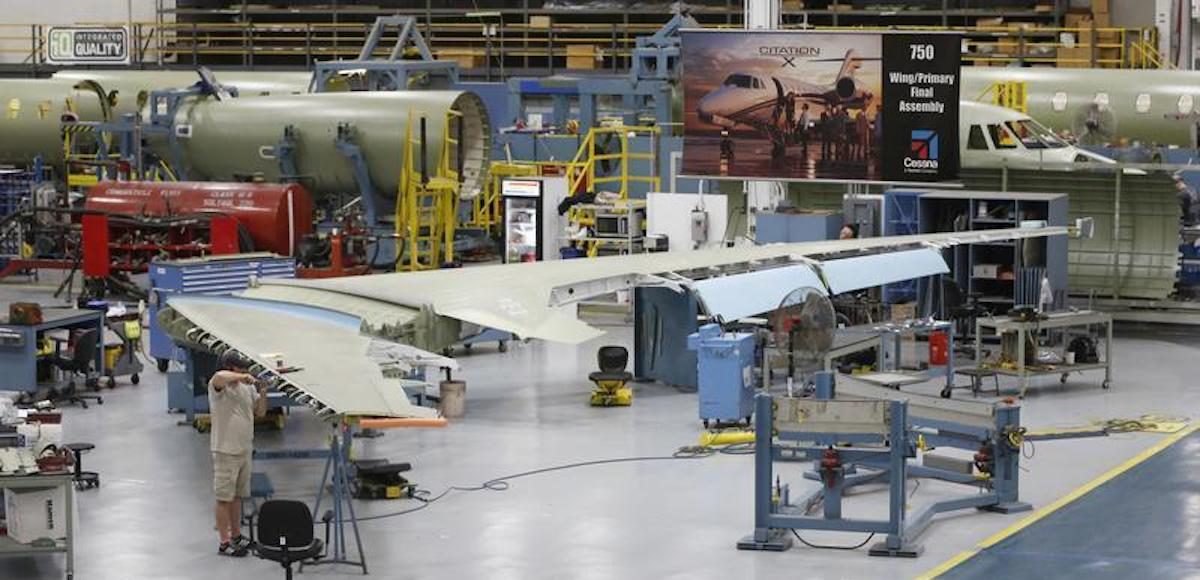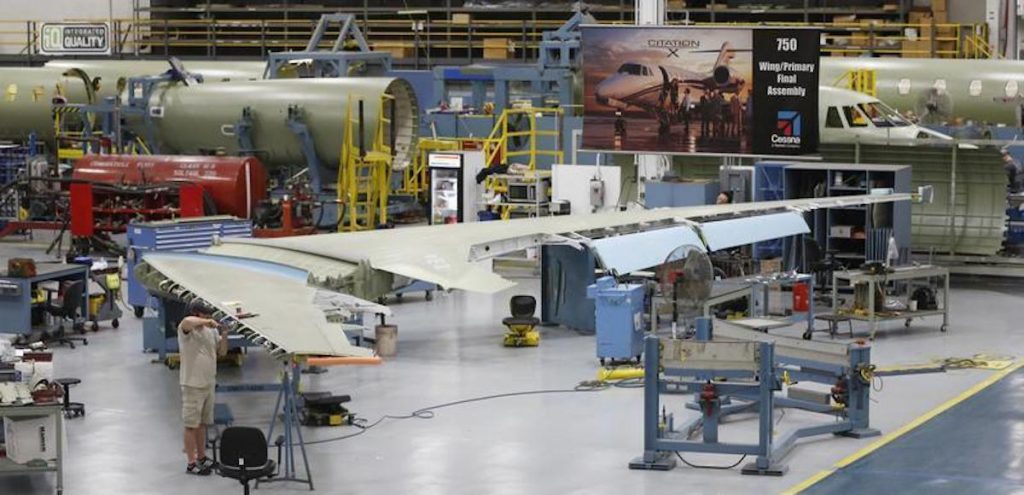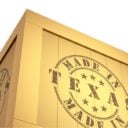

Nathan Rogers works on the jet assembly line at Cessna, at their manufacturing plant in Wichita, Kansas March 12, 2013. (Photo: Reuters)
The Kansas City Fed Manufacturing Index gauging factory activity in the Tenth District hit the highest level ever in May for the second consecutive month. The Federal Reserve Bank of Kansas City Tenth District Manufacturing Survey “continued to expand at a rapid pace, and optimism remained high for future activity.”
“Our composite index rose to another record high in May, with continued optimism for future growth,” Chad Wilkerson, vice president and economist at the Federal Reserve Bank of Kansas City said. “Prices indexes were stable but remained at high levels.”
The month-over-month composite index — an average of the production, new orders, employment, supplier delivery time, and raw materials inventory indexes — was 29 in May, the highest ever in the survey’s history. That easily beat the 22 median forecast and represented a gain from readings of 26 in April and 17 in March.
Factory activity increased at both durable and nondurable goods plants, particularly at nondurable plants producing chemicals and food.
The production index jumped from 33 to 41, and the shipments, new orders, and new orders for exports indexes also moved higher. The raw materials inventory index ticked up 2 points from 17 to 19, and the finished goods inventory index also gained. Year-over-year factory indexes increased “considerably” over the previous month, Mr. Wilkerson said.
The composite index rose from 36 to 45.
The production, shipments, order backlog, and new orders indexes all increased higher. The capital expenditures index jumped from 26 to 33, and the employment index reached its highest level in survey history. The raw materials inventory index inched lower from 32 to 28, while the finished goods inventory index increased.
Future factory activity expectations moderated slightly but remained solid overall. The future composite index slipped from 31 to 26, and the future production, shipments, new orders and order backlog indexes also fell somewhat.
The future capital expenditures index eased from 37 to 33, while the future employment index was unchanged. The future raw materials inventory index decreased from 19 to 7, and the future finished goods inventory index also edged lower.
Most price indexes were little changed in May but remained at high levels.
The month-over-month finished goods price index eased from 29 to 22, while the raw materials price index was basically unchanged. The year-over-year finished goods price index slipped from 60 to 56, while the year-over-year raw materials price index inched higher. The future finished goods price index fell from 53 to 44, and the future raw materials price index moderated slightly.





